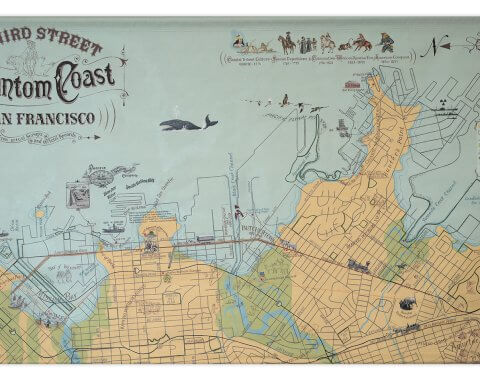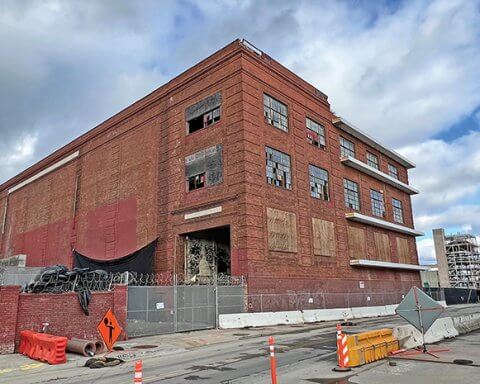California hosts a largely hidden and fast growing grid of dispersed diesel generators; those low buzzing big boxes located at internet server farms, hospitals, police stations, and, during Outside Lands, Golden Gate Park. In 2018, roughly 6,500 back-up generators, known as “BUGs,” were littered across the San Francisco Bay Area, able to power up a collective 3,810 megawatts (MW). In 2021 – less than three years later – BUG deployment had reached 8,722 generators, 4,840 MW of power supply, a 34 percent jump in the back-up generator fleet.
There are enough Bay Area BUGs to light up more than two San Francisco’s, on a day when demand is at its absolute highest.
Similarly, in 2020 there were 12,104 back-up generators totaling 2,697 MW of capacity in the area regulated by the South Coast Air Quality Management District. Just a year later this population had grown to 14,785 BUGs, 7,360 MW capacity, a 22 percent increase in the swarm.
California’s electricity grid can supply about 80 gigawatts of power. BUGs in the Bay Area and South Coast alone can generate roughly 15 percent of the entire grid.
Throughout the state larger generators are being deployed more rapidly. Nearly 90 percent of back-up generators located in the Bay Area and South Coast are diesel fueled.
Residential generators, which are largely unregulated, and for which population data are unavailable, are similarly flying off shelves, like so many cicadas waking up from a long sleep. Despite boosting production of standby residential generators with a new South Carolina plant, Waukesha-based Generac Power Systems, the largest supplier of home-based BUGs, has a six-month backlog and is considering adding a West Coast factory.
Diesel generators tend to be located close to where people live, work, and attend school. They frequently squat in communities that’re already subject to multiple pollution sources, as measured by CalEnviroScreen, which maps pollution burdens throughout the state. Ironically, given state and local climate and net zero emission goals, the public sector is amongst the most voracious BUG adopters. In South Coast, governments owns almost 14 percent of the population, with health care facilities responsible for another roughly 10 percent. In the Bay Area, the public sector accounts for 13 percent of nonresidential generators.
Legislators, protective of taxpayer monies, deploy BUGs as a low-cost solution to reliability issues. But they’re a significant source of greenhouse gases, particulate matter (PM), volatile organic compounds (VOCs), nitrous oxides (NOx), and sulfur dioxide, which can create smog and exacerbate respiratory conditions, like asthma, chronic obstructive pulmonary disease, and lung cancer, especially for children and older adults.
Non-residential BUG use in the Bay Area and South Coast alone produces annual emissions of at least 86,899 metric tons of carbon dioxide (MTCO2), roughly 20 MT of fine PM, 62 MT of VOCs, and almost 1,000 MT of haze-inducing NOx. This pollution, in turn, may trigger upwards of $136 million of health costs a year, due to increases in mortalities, heart attacks, hospital visits and other adverse consequences. Costs associated with the statewide fleet of BUGs, as well as residential generators, are much higher.
Data related to the number of hours that diesel generators operate is self-reported, with little regulatory scrutiny. The degree to which BUGs run is influenced by a host of factors, including wildfires, Public Safety Power Shut-offs, severe weather, and potentially their use to arbitrage increasingly expensive electricity prices.
In California, non-residential BUGs are individually permitted by one of 35 air districts in which they’re located. Their cumulative magnitude is largely hidden; data from the districts is not meaningfully aggregated or reported at the state level.
Absent new policy directions, the role diesel generation plays in California’s energy mix will continue to increase. Looking for low-cost and expediate ways to ensure reliability in the face of potential supply shortfalls, Governor Gavin Newsom and regulators have greenlit virtually unrestricted use of diesel generators in the near future.
Photo: Bay Area Air Quality Management District Back-up Generators. There are more than 8,700 BUGs capable of generating 4.8 gigawatts in the Bay Area. The map shows the siting of these generators in the context of CalEnviroScreen; red/orange indicates the most environmental burdened, vulnerable communities, blue/green the least. Credit: M.Cubed




